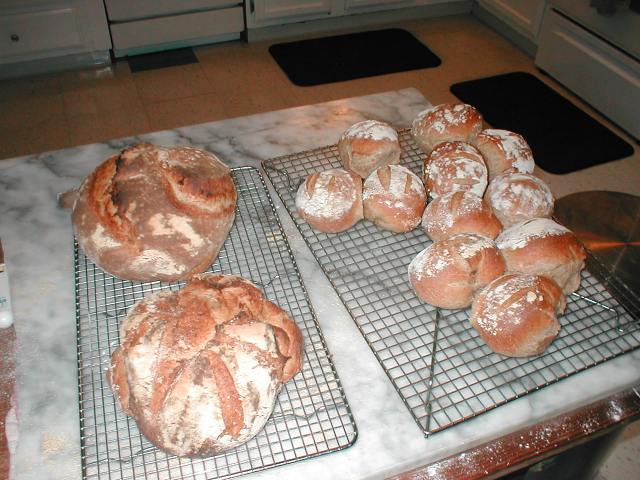Another traditional Maria Christmas cookie. Yummy.
Liza found a dough recipe online. The filling is Maria-specific.
Stuff
Dough:
- 8 cups flour
- 1 1/3 cups sugar
- 2 teaspoon baking powder
- 2 teaspoon salt
- 4 sticks butter, cold, chopped into cubes
- 8 eggs, beaten
- 2 cups roasted almonds, whole
- 2 packages figs (need to look up size)
- 1 ten oz package of pitted dates
- 1/2 lb fruit cake mix (this is the tub of sugary dried orange/lemon peels, cherries, pine apple, etc)
- 1.5 cups raisins
- 8 oz semi-sweet or bitter sweet chocolate.
- 1.5 cups espresso
Method
Dough
- Combine dry ingredients in a big bowl.
- Add butter cubes to flour and cut in with a pastry cutter until butter is about pea sized.
- Mix in beaten eggs to combine. Gently knead into a dough, add a bit of cold milk if needed.
- Refrigerate dough for an hour or so.
Filling
- Chop stem out of figs, chop fig into 2 or 3 chunks. Put figs into sauce pan and just cover with water. Simmer for about 20 minutes, until figs offer no resistance to being poked with a knife. Drain water.
- When figs are cool, chop them up in a food processor until pasty. Put them in a large sauce pan.
- Chop almonds in food processor until ground to lumpy pea-sized bits. Don't go crazy and make a powder/flour thing, you want the texture. Pour the almonds into the sauce pan with the fig gunk.
- Chop dates in food processor until nearly pureed. Put the date gunk into your sauce pan.
- Chop the raisins and fruit cake mix in the food processor. You may need to add a touch of water to get the fruit cake mix to break down a bit. Dump it in the sauce pan.
- Chop up the chocolate with a knife and toss it in the sauce pan.
- Pour the espresso into the mixture and mix it all up.
Assembly/cooking
- Preheat oven to 350F.
- Roll out a bit of dough into a thin strip about 3-4 inches wide and a foot or so long.
- Put a line of filling down the center of the rolled out dough - lenghtwise. Roll the dough around the filling.
- Cut the roll into little cookes, then make a slice half-way lenght wise in the cookie. See picture:
- Bake for 15-20 minutes until golden.
- Cool. Ice (you can use the same icing recipe from here, but omit the anise). Sprinkle with bling.




















































